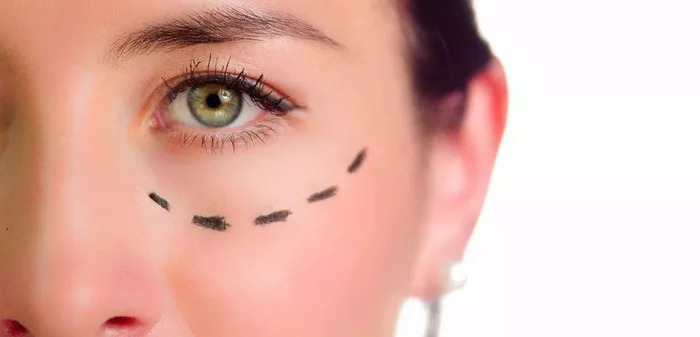Eyelid surgery, medically known as blepharoplasty, is a common cosmetic procedure sought by individuals for both aesthetic and functional reasons. While many people undergo this surgery to improve their appearance or address age-related concerns, some individuals may require eyelid surgery for medical reasons, such as impaired vision due to drooping eyelids. In such cases, getting insurance coverage for eyelid surgery can significantly ease the financial burden.
However, securing insurance coverage for eyelid surgery is not always straightforward. In this comprehensive guide, we will explore the steps and considerations involved in getting your eyelid surgery covered by insurance. From understanding the medical necessity to navigating insurance policies, we will provide you with valuable insights to help you on your journey.
Determining Medical Necessity
1.1. Consultation with a Qualified Specialist
The first step in getting your eyelid surgery covered by insurance is to consult with a qualified ophthalmologist or plastic surgeon. They will assess your condition and determine whether you require eyelid surgery for medical reasons. It is crucial to choose a specialist experienced in dealing with eyelid issues and familiar with the insurance process.
1.2. Understanding Medical Necessity
Eyelid surgery may be deemed medically necessary if it addresses functional problems that impair your vision or cause discomfort. Common conditions that may justify insurance coverage include:
Ptosis: A condition where the upper eyelid droops excessively, potentially obstructing vision.
Dermatochalasis: The presence of excess, sagging skin in the upper or lower eyelids that interferes with vision.
Ectropion or entropion: Conditions where the eyelid turns outward or inward, causing discomfort and eye irritation.
Trauma or injury: Cases where the eyelids have been damaged due to accidents or other medical conditions.
1.3. Obtaining Medical Documentation
Your specialist will play a crucial role in documenting your medical condition. Detailed medical records, photographs, visual field tests, and any other relevant information will be essential in justifying the medical necessity of your eyelid surgery to the insurance company.
Understanding Insurance Policies
2.1. Review Your Insurance Policy
Once your specialist has determined the medical necessity of eyelid surgery, it’s essential to thoroughly review your insurance policy.
Policies can vary significantly, and not all insurers cover eyelid surgery for medical reasons. Some key points to consider include:
Does your policy cover reconstructive eyelid surgery for medical conditions?
What are the specific criteria for medical necessity outlined in your policy?
Are there any exclusions or limitations related to cosmetic procedures?
What is your deductible, co-payment, and out-of-pocket maximum?
2.2. Pre-authorization and Referral
Before proceeding with eyelid surgery, check with your insurance company if pre-authorization or a referral from your primary care physician is required. Failing to obtain these may result in a denial of coverage.
2.3. Contacting Your Insurance Provider
Contact your insurance provider’s customer service or claims department to discuss your case. Ask specific questions regarding the coverage of eyelid surgery for your medical condition. Make sure to document the date and details of your conversation for reference.
Preparing for the Insurance Claim
3.1. Gather Required Documentation
To support your insurance claim, compile all necessary documentation, including:
Medical records and reports from your specialist.
Photographs depicting the condition of your eyelids.
Visual field test results indicating the extent of vision impairment.
Copies of your insurance policy, specifically highlighting relevant coverage clauses.
3.2. Consult Your Surgeon
Consult with your chosen surgeon regarding the submission of the insurance claim. They should be familiar with the process and can assist in preparing a comprehensive claim submission.
The Insurance Claim Process
4.1. Submitting the Claim
Follow your insurance provider’s guidelines for submitting claims. Ensure that all required documents are included and accurately filled out. Timely submission is crucial to avoid delays in processing.
4.2. Claim Review
Your insurance company will review your claim to determine its validity. They may request additional information or documentation. Be prepared to provide prompt responses to their inquiries.
4.3. Claim Approval or Denial
After the review process, your claim will be approved or denied. If approved, the insurance company will specify the coverage and any associated costs, such as deductibles or co-payments. If denied, you have the right to appeal the decision.
The Appeals Process
5.1. Understand the Denial
If your claim is denied, carefully review the insurance company’s explanation for the denial. Ensure that it aligns with the terms and conditions of your policy.
5.2. Consult Your Specialist
Seek guidance from your specialist to understand the denial and determine if additional information or documentation can strengthen your case.
5.3. Appeal Promptly
Insurance companies typically have a specific window for appeals. File your appeal within the designated timeframe, adhering to the insurer’s guidelines for the appeals process.
5.4. Be Persistent
The appeals process can be lengthy and may require multiple stages. Stay persistent, maintain clear communication with your surgeon and insurance company, and provide any requested information promptly.
Conclusion
Securing insurance coverage for eyelid surgery can be a complex process, but it is possible with careful planning and adherence to the necessary steps. Start by consulting a qualified specialist to establish the medical necessity of the procedure. Then, thoroughly review your insurance policy and understand its coverage criteria. When preparing your claim, gather all required documentation and involve your surgeon in the process.
Remember that insurance claim denials are not uncommon, but persistence and a clear understanding of the appeals process can increase your chances of approval. By following the guidelines outlined in this article, you can navigate the path to potentially having your eyelid surgery covered by insurance, ensuring both your visual health and financial well-being.


